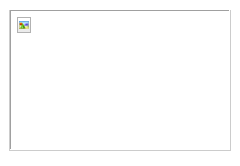If you are located in Indonesia, the service determines your region by network parameters, for example, by IP address. Some types of content cannot be displayed in your region due to legal requirements.
Jika Anda berada di Indonesia, layanan ini akan menentukan wilayah Anda berdasarkan parameter jaringan, misalnya, berdasarkan alamat IP. Beberapa jenis konten tidak dapat ditampilkan di wilayah Anda karena adanya ketentuan hukum yang berlaku.
Which texts does the robot use for image search?
The text for the alt attribute for the imgtag
The alt attribute is an alternative source of information for users who have disabled images in their browser. If the alt attribute is specified, the attribute text will display when it's not possible to display the image:

If the alt attribute is not specified, the image space will be empty:

It's especially important to describe the image by specifying the alt attribute for sites whose content consists predominantly of images.
This is how an alt attribute should look:
<img border="0" alt="[alternative text]" src="risunok.jpg"
width="[image width]" height="[image height]">
You don't need to put all the site's or page's keywords in the alt attribute, only the ones that really describe the image. This will help the robot find the most appropriate image and make it easier for Yandex users to select it from the search results and get to your site. We don't recommend leaving the alt attribute empty.
If you add multiple similar images (such as product photos in an online store), set a unique alt attribute for each of them (for example, front or back view).
The text for the title attribute in the imgtag
The title attribute gives additional information about the image. The text included in this attribute appears when hovering your mouse over the image:

This is how the title attribute should look:
<img border="0" alt="[alternative text]" title="[additional information about the image]"
src="risunok.jpg" width="[image width]" height="[image height]">
If the image is a link, then it's best to put the title attribute in the link element:
<a href="link.html" title="[additional information about the image]"><img border="0" alt="[alternative text]"
src="risunok.jpg" width="[image width]" height="[image height]"></a>
Specify a unique title for every image. We don't recommend leaving the title attribute empty.
Other texts
In addition to the alt and title attribute values, the following texts in image searches:
-
The texts of links to images from other pages and sites
-
The text on the webpage that is located in close proximity to the image
-
Texts and headers of short documents that surround a single image
-
Names of files and image scripts (including their transliterations and simplified word-for-word translation).
But the alt and title attributes are the most universal, so it's always best to specify them.